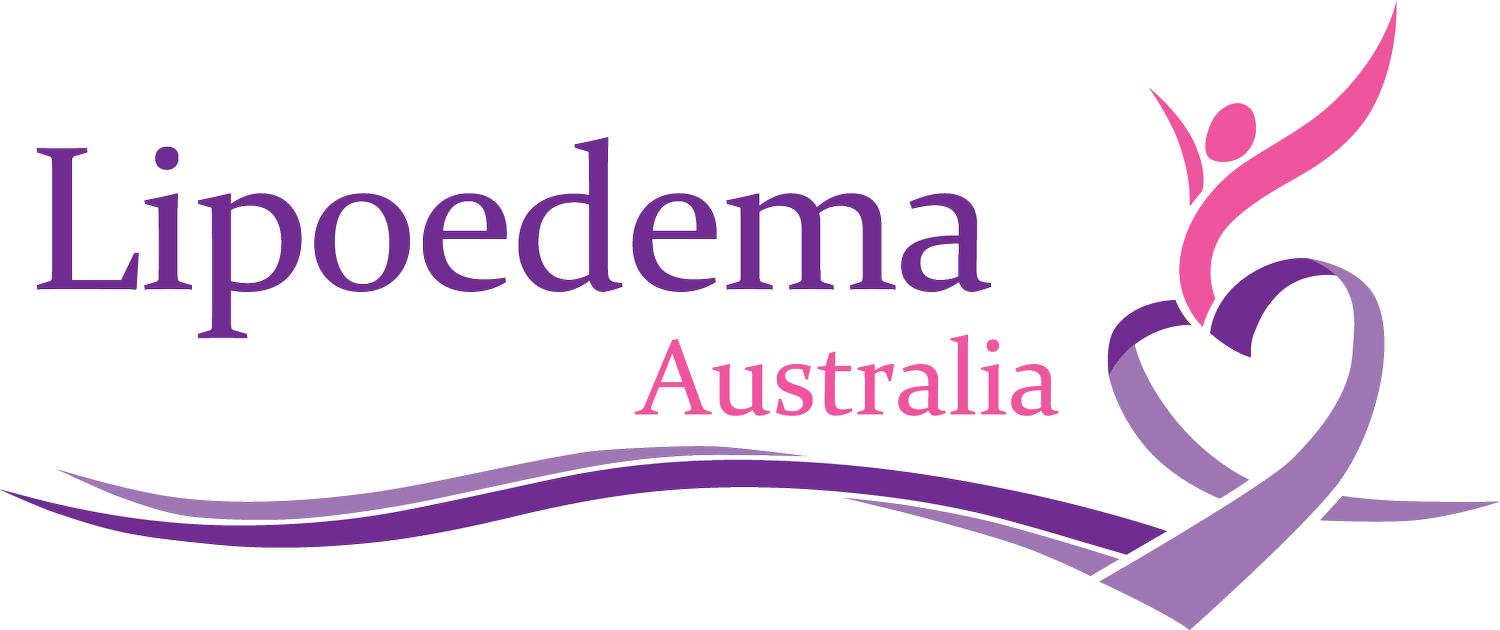ATMS Lipoedema Symposium – Sydney, 30 March 2025
The Australian Traditional Medicine Society (ATMS) dedicated an entire day to the topic of lipoedema at their recent symposium in Sydney — a powerful indication of the growing recognition this condition is receiving within the broader healthcare community. This focus reflects the tireless advocacy and awareness-raising efforts led by Lipoedema Australia, whose work continues to bring this often misunderstood and underdiagnosed condition into the spotlight.
The day began with Tamryn Riemann, Occupational Therapist, who covered assessment, diagnosis, and compression for lipoedema. She highlighted the frequent misdiagnosis of lipoedema as obesity or lymphoedema, noting that although lipoedema isn’t rare, it's rarely diagnosed.
Tamryn encouraged accredited lymphoedema/lipoedema practitioners to assess symptoms and refer patients to GPs with detailed letters. If GPs are unsure, she suggested referring on to Lipoedema Australia or specialist centres. She covered lipoedema’s symptoms, types, and stages, and compared it with lymphoedema and obesity - conditions that can often co-exist. She also detailed the importance of well-fitted compression garments, explaining both their benefits and limitations at various stages.
Next, Kimmi Katte, Clinical Nutritionist, spoke about managing comorbid obesity in lipoedema. She focused on reducing obesity without extreme dieting, especially for patients with a history of repeated diet cycles. Kimmi recommended regular tracking using tools like DEXA or SOZO scans and introduced the Lipoedema Nutritional Pyramid aimed at reducing obesity.
She discussed both the Energy Balance Model (where excess calories are the problem) and the Carbohydrate Insulin Model (where excess carbs disrupt insulin) and emphasised the need to find what works best for each individual. Tracking tools like Cronometer were suggested for better understanding of the energy components of foods. She also touched on leptin resistance, protein needs, and metabolic health as key to long-term management.
Kimmi strongly encouraged the use of nutritional counselling alongside the use of GLP type medications to avoid sarcopenic obesity in lipoedema patients.
Vanessa Ereaux, a Registered Psychologist, then shared her personal and professional insights on Lipoedema's psychological toll. She highlighted the significant emotional and physical consequences of delayed diagnosis, including social isolation, medical trauma, and avoidance of healthcare. Vanessa emphasized the critical importance of early diagnosis in preserving quality of life across emotional, physical, social, and financial domains.
The presentation also included an analysis of the time and financial costs associated with managing lipoedema, as well as the debilitating effects of weight stigma and shame on mental health. Vanessa offered a holistic framework for support, encompassing emotional, social, spiritual, and psychological dimensions. Finally, she provided guidance for practitioners on creating safe, compassionate care environments for women living with lipoedema.
Following that, Lisa Higgins, a Vodder-trained Remedial Massage Therapist, explored alternative and conservative management strategies. She clarified common confusion between the pronunciation of lipoedema, lymphoedema, and lipidemia, then focused on empowering patients with low- and no-cost at-home care strategies - particularly important given the financial burden of treatment.
She mentioned affordable micromassage compression options, SIPC devices, vibration plates, and the importance of peer support through local gatherings. Lisa gave a hands-on demo showing how to clear the main collections of lymph nodes, and effleurage of the upper half of limbs followed by lower half, including Prof Piller’s five breaths five times a day advice.
She contrasted two case studies - one person who actively managed their condition and adjusted as needed, and another who struggled with consistency and relied solely on monthly MLD sessions. Lisa closed with a comparison of three major lipoedema guidelines: the International Consensus Document, the Standard of Care, and the Best Practice Guidelines, urging attendees to read all three.
Finally, Shannon Chandler, a Vodder-trained Remedial Massage Therapist, talked about how pre- and post-operative care can enhance outcomes for people undergoing lipoedema surgery.
She outlined surgical options - liposuction, excisional procedures, and bariatric surgery - explaining the differences, including liposuction techniques. A key message was the importance of choosing the right surgeon, as their experience and approach can significantly influence results and recovery.
Shannon discussed key pre-surgery considerations: stage of lipoedema, overall health, cost, recovery time, and motivation. She asked the important question: Can conservative care deliver comparable results to surgery? For some, strategies like nutrition, movement, compression, MLD, and GLP-1 medication can reduce symptoms and improve quality of life.
She mapped out a typical recovery, with many returning to daily life by six weeks, and stressed the importance of preparation and team support.
Shannon highlighted the role of massage therapists, explaining that traditional MLD methods - Vodder, Chikly, Foldi, and Casley-Smith - are ideal for post-surgical recovery, helping manage fluid, reduce inflammation, and support healing.
She contrasted these with newer massage styles that are more aesthetic-focused and often unsuitable early in recovery. Shannon reinforced that therapists should always follow the surgeon’s protocols to ensure safe, coordinated care.
